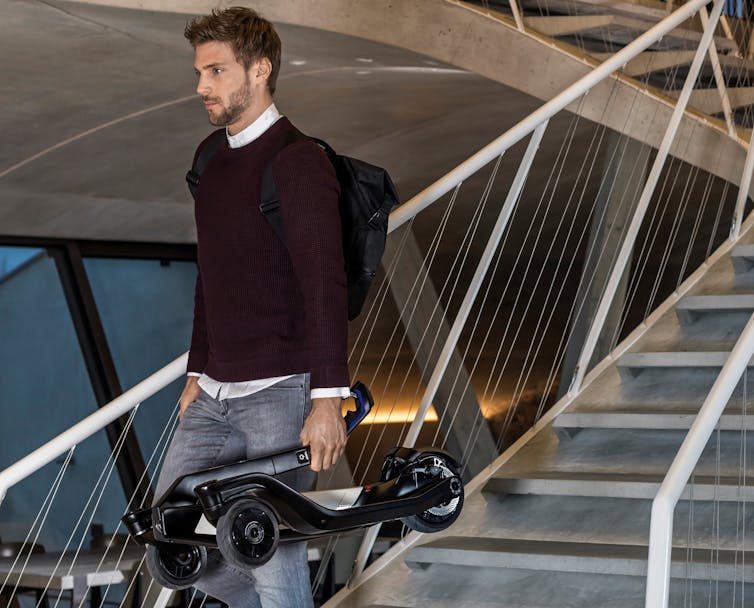
E-scooter mania is sweeping cities around the world. Fun, accessible and cheap to rent, shared electric scooters are one of the biggest technology stories this year.
Their main appeal is that they are so easy to ride. A flood of startups offer on-demand services. Simply download an app, scan the barcode, ride and drop at your destination.
When they reach their destinations, riders leave them and walk away. The scooters, like dockless share bikes before them, end up cluttering pavements, cause friction with pedestrians and provoke controversy and debate.
E-scooters are the future of city transport and will reduce private car use, say the enthusiasts. They will ease congestion and help cities achieve their environmental and road safety targets, according to the optimists.
But for every supporter of these e-boosted contraptions, a dissenting voice says they are annoying and dangerous. Critics argue that e-scooters litter our footpaths, menace pedestrians and cause crashes and injuries. One group in San Diego has even filed a law suit claiming that scooters discriminate against people with disabilities.
Some cities have banned e-scooters. In Australia, Brisbane City Council, while extending a trial of e-scooters operated by Lime, has warned safety must be improved before a permanent permit is granted.
Tiny vehicles, big impacts
The emergence of “tiny vehicles” includes not only e-scooters, but also e-bikes and other electric, low-speed, micromobility solutions.
If we take them seriously, these could be a huge deal for our cities. These emerging modes of transport can be quite effective for “first and last kilometre” travel (e.g. between home and your nearest train station). They can also help with short commuting distances less than 10 kilometres. An estimated 20% of trips from home to work in capital cities are 5-10km long.

Read more: Can e-scooters solve the ‘last mile’ problem? They’ll need to avoid the fate of dockless bikes
Clearly, we are nowhere near mass adoption. That would require more variety of tiny vehicles to suit all types of people, trips and weather conditions.
Nevertheless, there is no shortage of ideas to solve these challenges. Many solutions will undoubtedly be imagined. Some might actually work!






